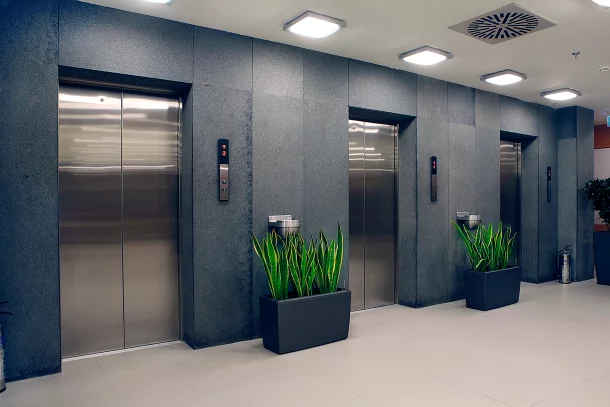London Lift Company: Relied On Professionals for All Your Upright Transport Requirements
London Lift Company: Relied On Professionals for All Your Upright Transport Requirements
Blog Article
Looking Into the World of Lifts: Typical Problems Dealt With by Various Lift Devices
As we navigate through the vertical transport systems of modern-day buildings, elevators stand out as a crucial element of our every day lives. Nonetheless, behind their smooth operation exists a globe of intricate devices that can often experience difficulties. From hydraulic elevators to grip systems and machine-room-less layouts, each lift type comes with its set of common issues. Understanding these difficulties is crucial for making certain the smooth functioning of these crucial systems. Allow's explore the intricacies that underlie the procedure of elevators and the possible issues that can arise, losing light on the detailed web of lift systems.
Hydraulic Lifts
Hydraulic elevators, often liked for low-rise structures, make use of fluid stress to control the activity of the lift car (lift repair companies). This device includes a hydraulic pump pushing oil into a cyndrical tube, triggering the lift to move in the desired direction. While hydraulic lifts are understood for their smooth and quiet operation, they do include their own collection of usual concerns
One common problem with hydraulic lifts is oil leak. Additionally, issues with the control system, such as defective valves or a malfunctioning pump, can create disruptions in the lift's motion.
Regular upkeep and prompt repairs are necessary to ensure the smooth performance of hydraulic lifts. By resolving these typical issues proactively, building proprietors can reduce downtime and ensure the safety and security and effectiveness of their upright transportation system.
Traction Lifts
When taking into consideration upright transportation systems in structures, an additional usual type apart from hydraulic lifts is the traction lift. Traction elevators run making use of a system of ropes and counterweights that relocate the lift car by clutching onto the hoist ropes. This device permits smoother and faster vertical transport compared to hydraulic systems.
One of the common problems faced by grip lifts is rope wear. The constant motion of the ropes within the grip system can cause use and tear gradually, potentially triggering the elevator to malfunction or end up being hazardous for use. Routine examinations and maintenance of the ropes are vital to ensure the lift's correct functioning and safety.
One more issue that grip elevators may run into is connected to the control system. Problems with the control system can cause problems such as unpredictable motion, hold-ups in action times, or also complete closures. Routine testing and maintenance of the control system are essential to stop such problems and guarantee the lift's dependability.
Machine-Room-Less (MRL) Lifts

One of the vital components of MRL lifts is the compact gearless grip maker that is mounted within the hoistway. This device successfully drives the lift disabled platform lifts prices uk cars and truck without the demand for large devices located in conventional traction lifts. In addition, MRL elevators generally use a weight system to stabilize the automobile, more boosting their energy effectiveness.
Regardless of their benefits, MRL elevators might encounter challenges connected to upkeep and fixing as a result of the constrained room for tools installation. Accessibility for servicing elements within the shaft can be limited, requiring specialized training for specialists. Correct maintenance routines and regular inspections are crucial to make sure the continued smooth procedure of MRL elevators.
Overloading and Weight Limitation Issues
Are elevators outfitted to manage excess weight loads efficiently and safely? Overloading and weight limitation issues are critical problems in lift operations. Elevator producers layout raises with specific weight abilities to ensure we maintain lifts guest security and devices longevity. Surpassing these weight limitations can cause various issues, consisting of mechanical failures, delays, and security hazards.
When lifts are overloaded, it places excessive stress on the electric motor, cables, and various other components, possibly creating breakdowns or malfunctions. If they identify excess weight, safety and security systems such as sensing units and overload sensors are in place to avoid lifts from relocating. Additionally, exceeding weight limitations can result in increased energy intake and wear and tear on the elevator system.
To mitigate overwhelming concerns, constructing supervisors should prominently show weight limits in elevators and enlighten occupants on the significance of adhering to these restrictions - lift repair companies. Normal upkeep checks by qualified professionals can likewise aid guarantee that elevators are operating within safe weight specifications. By addressing overloading and weight restriction issues proactively, structure owners can boost elevator safety and security and efficiency
Electrical System Failures
Exceeding weight restrictions in lifts can not only lead to mechanical problems but also possibly add to electric system failures within the lift framework. Electric system failures are a vital issue in elevator procedure, as they can create unexpected closures, malfunctions, or even safety and security risks.
Routine maintenance and assessments are essential to recognize and address potential electric issues without delay, making sure the efficient and risk-free operation of lift systems. By adhering to weight limitations and conducting regular electric system checks, building proprietors can reduce the threat of electrical failings in elevators.
Final Thought

Hydraulic elevators, usually preferred for low-rise buildings, make use of fluid pressure to control the motion of the elevator auto.When thinking about vertical transport systems in buildings, another typical type aside from hydraulic lifts is the traction lift. Grip elevators operate making use of a system of ropes and counterweights that move the elevator car by we maintain lifts gripping onto the hoist ropes. Unlike typical elevators that call for a separate equipment room to house the devices, MRL elevators integrate many of the components within the shaft, removing the need for a committed device area.In conclusion, lifts encounter common problems such as hydraulic breakdowns, traction system failings, and electric system problems.
Report this page